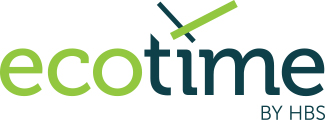Managing Family and Medical Leave Act (FMLA) compliance while maintaining accurate time and attendance records can feel like juggling flaming torches while walking a tightrope. For HR professionals and payroll managers, the complexity multiplies when dealing with intermittent leave, overlapping state regulations, and the constant need for precise documentation.
The good news? Modern time and attendance software can transform this administrative nightmare into a streamlined, automated process that protects both employees and employers.
The FMLA Compliance Challenge
FMLA regulations require eligible employees to receive up to 12 weeks of unpaid, job-protected leave for qualifying family and medical reasons. However, the administrative burden extends far beyond simply tracking time off. Organizations must:
- Track employee eligibility based on tenure, hours worked, and company size
- Manage complex calculations for intermittent leave usage
- Generate and submit required documentation within strict deadlines
- Coordinate with state leave laws like California’s CFRA or New York’s paid family leave
- Maintain detailed records for potential audits and compliance reviews
- Calculate leave balances while accounting for varying work schedules and pay periods
When these processes rely on spreadsheets, manual calculations, and disparate systems, errors become inevitable. A single miscalculation can result in costly compliance violations, employee disputes, or legal challenges.
How Integration Transforms FMLA Management
Integrating FMLA functionality directly into your time and attendance system creates a single source of truth that eliminates data silos and reduces human error. Here’s how this integration delivers immediate benefits:
Automated Eligibility Tracking
Rather than manually reviewing employee records to determine FMLA eligibility, integrated systems automatically track key metrics including hire dates and hours worked over the past 12 months. When an employee submits an FMLA event the system can trigger notifications to HR teams and update available leave balances automatically.
Seamless Leave Request Processing
Employees can submit leave requests directly through the same interface they use for daily timekeeping. The system automatically routes requests for approval, generates required documentation, and payroll processing—all without manual intervention.
Real-Time Balance Management
Integrated systems track FMLA usage in real-time, accounting for full-day absences, partial days, and intermittent leave. This eliminates the guesswork around remaining balances and prevents employees from inadvertently exceeding their allotted leave.
Simplified State Law Coordination
With multiple states implementing their own family leave programs, compliance becomes exponentially more complex. Integrated systems can manage overlapping federal and state requirements, automatically applying the most generous provisions while maintaining separate tracking for each program.
The Operational Impact: Beyond Compliance
While compliance is the primary driver for FMLA integration, the operational benefits extend throughout the organization:
For HR Teams: Reduced administrative burden means more time for strategic initiatives. Automated document generation and submission tracking eliminate the constant worry about missed deadlines or incomplete paperwork.
For Payroll Departments: Accurate leave tracking integrates seamlessly with payroll processing, reducing the need for manual adjustments and ensuring employees are paid correctly the first time.
For Employees: Self-service capabilities provide transparency into leave balances and request status, reducing anxiety and improving the overall leave experience during already stressful situations.
For Managers: Real-time visibility into team availability enables better workforce planning and reduces the administrative burden of tracking individual leave requests.
Implementation Best Practices
Successfully integrating FMLA functionality requires careful planning and attention to detail:
Start with Policy Alignment
Before implementing new technology, review and update your FMLA policies to ensure they align with current regulations and your organizational needs. This foundation ensures the system configuration accurately reflects your actual practices.
Prioritize Data Migration
Clean, accurate historical data is essential for proper leave balance calculations. Invest time in data cleanup and validation before going live to prevent ongoing issues with incorrect balances or eligibility determinations.
Plan for Training
Even the most intuitive system requires proper training. Develop comprehensive training programs for HR teams, managers, and employees, with particular attention to new self-service capabilities and approval workflows.
Test Extensively
FMLA calculations can be complex, particularly for employees with varying schedules or intermittent leave patterns. Thoroughly test different scenarios before implementation to ensure accurate calculations across all use cases.
The Technology Behind Seamless Integration
Modern time and attendance systems leverage sophisticated algorithms and rule engines to handle FMLA complexity automatically. Key technical capabilities include:
- Rule-based automation that applies complex eligibility criteria and leave policies without manual intervention
- Real-time synchronization between timekeeping, leave management, and payroll systems
- Comprehensive audit trails that document every action and calculation for compliance reviews
- Configurable reporting that generates required forms and documentation automatically
Measuring Success
Organizations that successfully integrate FMLA functionality typically see measurable improvements across several key metrics:
- Reduced processing time for leave requests, often from days to hours
- Improved accuracy in leave balance calculations and eligibility determinations
- Decreased compliance violations and associated penalties
- Enhanced employee satisfaction through improved transparency and self-service capabilities
- Lower administrative costs through reduced manual processing requirements
Looking Forward: The Strategic Advantage
As workforce flexibility becomes increasingly important for talent attraction and retention, organizations with streamlined leave management processes gain a competitive advantage. Integrated FMLA functionality positions companies to:
- Respond quickly to changing regulations and compliance requirements
- Scale leave management processes as the organization grows
- Provide employees with modern, user-friendly tools for managing their benefits
- Reduce the risk of costly compliance violations and legal challenges
Getting It Right the First Time
The complexity of FMLA compliance demands a solution that handles intricate calculations, multiple regulations, and detailed documentation requirements without compromise. Integrated time and attendance software eliminates the workarounds and manual processes that lead to errors, ensuring your organization remains compliant while reducing administrative burden.
By choosing a system designed to handle complexity rather than forcing your processes to fit limited functionality, you create a foundation for accurate payroll, satisfied employees, and confident compliance management.
Ready to streamline your FMLA compliance? Contact our team to learn how Ecotime’s integrated FMLA module can eliminate manual processes and ensure accurate leave management for your organization.













